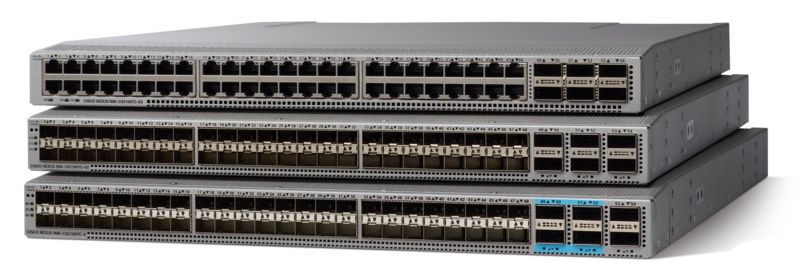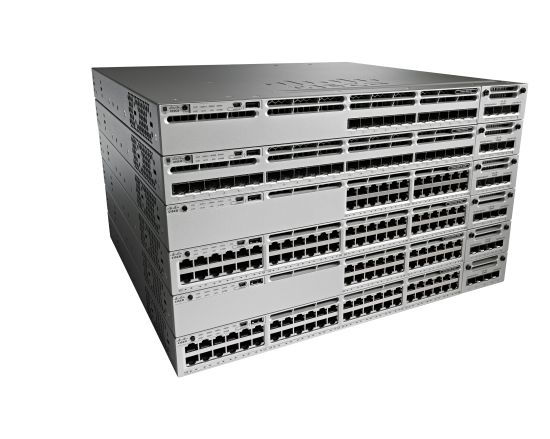A Multigigabit switch, also known as a Multi-Gigabit Ethernet switch, is a type of networking device designed to support data transmission at speeds higher than traditional Gigabit Ethernet (1Gbps) but lower than 10 Gigabit Ethernet (10Gbps). These switches are increasingly deployed in environments where faster network speeds are required to accommodate the growing demand for high-bandwidth applications and services. Here’s a comprehensive explanation of what a Multigigabit switch is and its significance in network architecture:
Overview:
A Multigigabit switch is an Ethernet switch that supports data transmission at speeds greater than 1 gigabit per second (Gbps) but less than 10 gigabits per second (Gbps). It typically offers speeds such as 2.5Gbps and 5Gbps, providing intermediate options between traditional Gigabit Ethernet and 10 Gigabit Ethernet. These switches are well-suited for upgrading existing network infrastructures to support higher-speed connectivity without the need for a complete overhaul.
Key Functions and Characteristics:
Increased Speed Options: The primary function of a Multigigabit switch is to provide increased speed options beyond traditional Gigabit Ethernet (1Gbps). By offering speeds such as 2.5Gbps and 5Gbps, these switches enable organizations to achieve faster data transfer rates without the complexity and cost associated with deploying 10 Gigabit Ethernet infrastructure.
Backward Compatibility: Many Multigigabit switches offer backward compatibility with lower-speed Ethernet standards, such as 1 Gigabit Ethernet and Fast Ethernet (100Mbps). This allows organizations to leverage their existing network infrastructure and gradually transition to higher-speed connectivity as needed, without disrupting current operations.
Flexible Deployment Options: Multigigabit switches are suitable for a wide range of deployment scenarios, including upgrading wired Ethernet connections in offices, schools, hospitals, and other enterprise environments. They can be used to support high-bandwidth applications such as video streaming, file sharing, and virtual desktop infrastructure (VDI), as well as emerging technologies like Internet of Things (IoT) devices and Wi-Fi 6 access points.
PoE (Power over Ethernet) Support: Many Multigigabit switches also support Power over Ethernet (PoE) technology, which enables them to deliver power to connected devices such as wireless access points, IP cameras, and VoIP phones over the same Ethernet cable used for data transmission. This simplifies installation and reduces the need for additional power outlets, making them ideal for powering network devices in remote or hard-to-reach locations.
Advanced Features: Multigigabit switches often include advanced features such as Quality of Service (QoS), VLAN support, Link Aggregation (LAG), and network management capabilities. These features help optimize network performance, prioritize critical traffic, and simplify network administration and troubleshooting in complex environments.
Cost-Effective Solution: Compared to upgrading to 10 Gigabit Ethernet, deploying Multigigabit switches can be a more cost-effective solution for organizations looking to increase network speeds. It allows them to leverage existing cabling infrastructure and gradually upgrade to higher speeds as their bandwidth requirements grow.
Importance in Network Architecture:
Multigigabit switches play a crucial role in modern network architecture, particularly in environments where higher-speed connectivity is required to support bandwidth-intensive applications and emerging technologies. They provide organizations with a flexible and cost-effective solution to upgrade their network infrastructure and meet the evolving demands of today’s digital landscape.
Conclusion:
In conclusion, a Multigigabit switch is a versatile networking device that offers increased speed options beyond traditional Gigabit Ethernet, enabling organizations to achieve faster data transfer rates and support high-bandwidth applications. With its backward compatibility, flexible deployment options, PoE support, advanced features, and cost-effective solution, the Multigigabit switch serves as a vital component of modern network architectures, empowering organizations to optimize their network performance and meet the growing demands of their users and applications.

1
Cisco Catalyst 9000 Series

Cisco Catalyst 9000 Series: Another popular series from Cisco, offering advanced features and capabilities suitable for various network environments.
2
HPE Aruba 5400R Series

Hewlett Packard Enterprise’s Aruba 5400R series switches provide PoE options, robust security features, and scalability suitable for medium to large-scale deployments.
3
Juniper Networks EX Series

Juniper’s EX series switches are known for their high-performance and scalability, catering to the needs of enterprise networks.
4
Cisco Small Business 350 Series

Cisco Business is a portfolio of affordable wireless access points, switches and routers designed and built for Small Business. Managed through Cisco Business mobile app or dashboard, the portfolio provides a simple and reliable experience.
5
Dell EMC PowerSwitch N2200-ON Series

Dell EMC’s N2000 series offers a range of switches suitable for different network sizes and requirements.
Datasheet:
High-performance, high-density open networking 40/100GbE multi rate aggregation switch
dell-networking-n3200-powerswitch-specsheet.pdf (delltechnologies.com)
6
RUCKUS ICX 7000 Series

The Ruckus 7000 family of stackable switches delivers the performance, flexibility, and scalability required for enterprise access deployment, raising the bar with non-blocking performance. It offers seamless interoperability with Ruckus wireless products to deliver unified wired and wireless network access.
In addition, Ruckus Multigigabit Ethernet technology offers bandwidth speeds needed to optimize performance.
7
HPE Aruba 2930M Series

Hewlett Packard Enterprise’s Aruba 2930M series switches provide PoE options, robust security features, and scalability suitable for medium to large-scale deployments.
8
Extreme Networks 5420 Series

The 5420 Series is a family of high-performance, feature-rich, stackable edge switches designed for the next-generation digital enterprise. Available in 24 and 48-port models, the 5420 features both gigabit and multi-gigabit (1/2.5G) versions with up to 90W PoE enabling it to be deployed across a range of edge and wiring closet environments
Datasheet
16 x 100Mb/1Gb/2.5Gb 802.3bt 90W PoE ports plus 32 x
10/100/1000BASE-T Full / Half-Duplex 30W PoE ports
9
Ubiquiti UniFi Enterpise Series

Simplify the complexities of deploying and managing modern enterprise networks with AI-powered automation and built-in security delivered by network switches that scale from edge to the cloud.
10
Netgear M4350

The M4350 brings all the simplicity from the M4250 AV Line packed in more Enterprise-class hardware with redundant power supplies and larger fabrics with 25G and 100G uplinks. Added bounce of pre-configured profiles for all major audio, video, and lighting protocols.